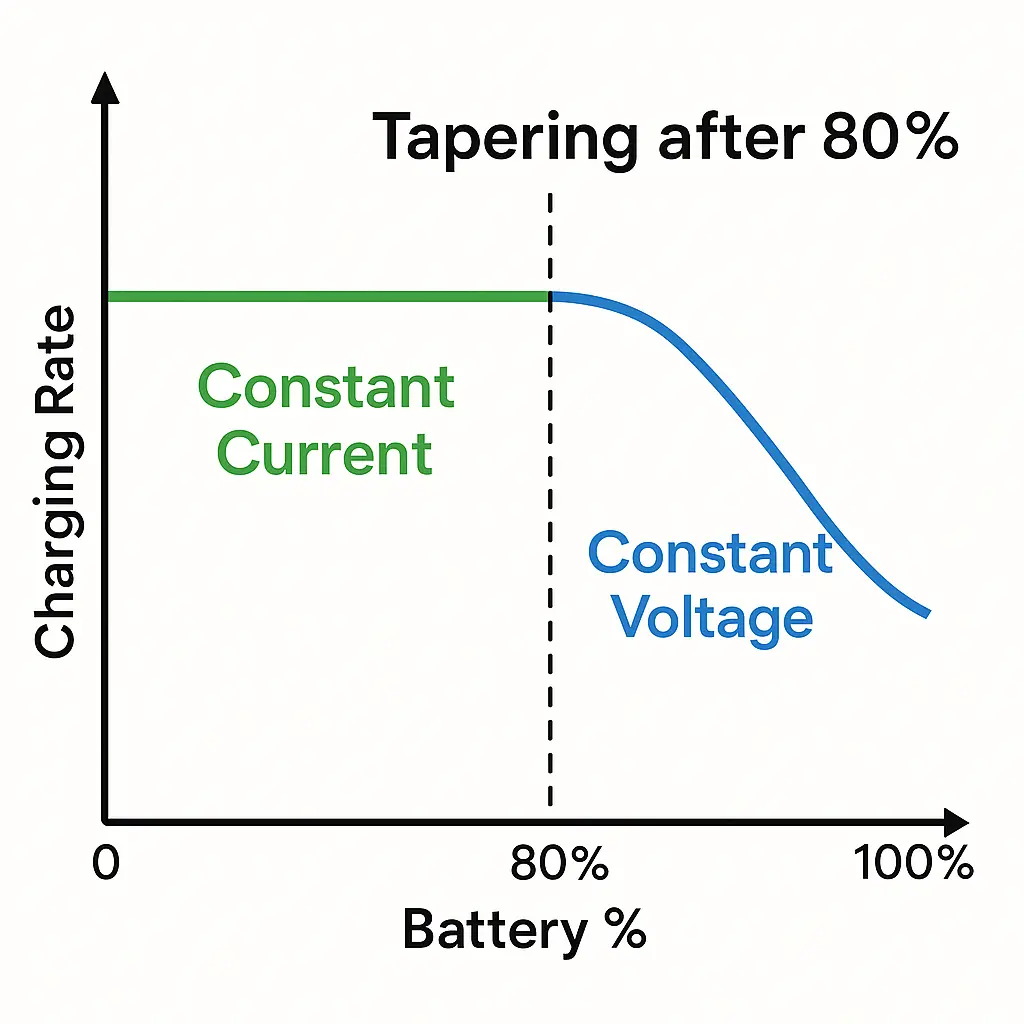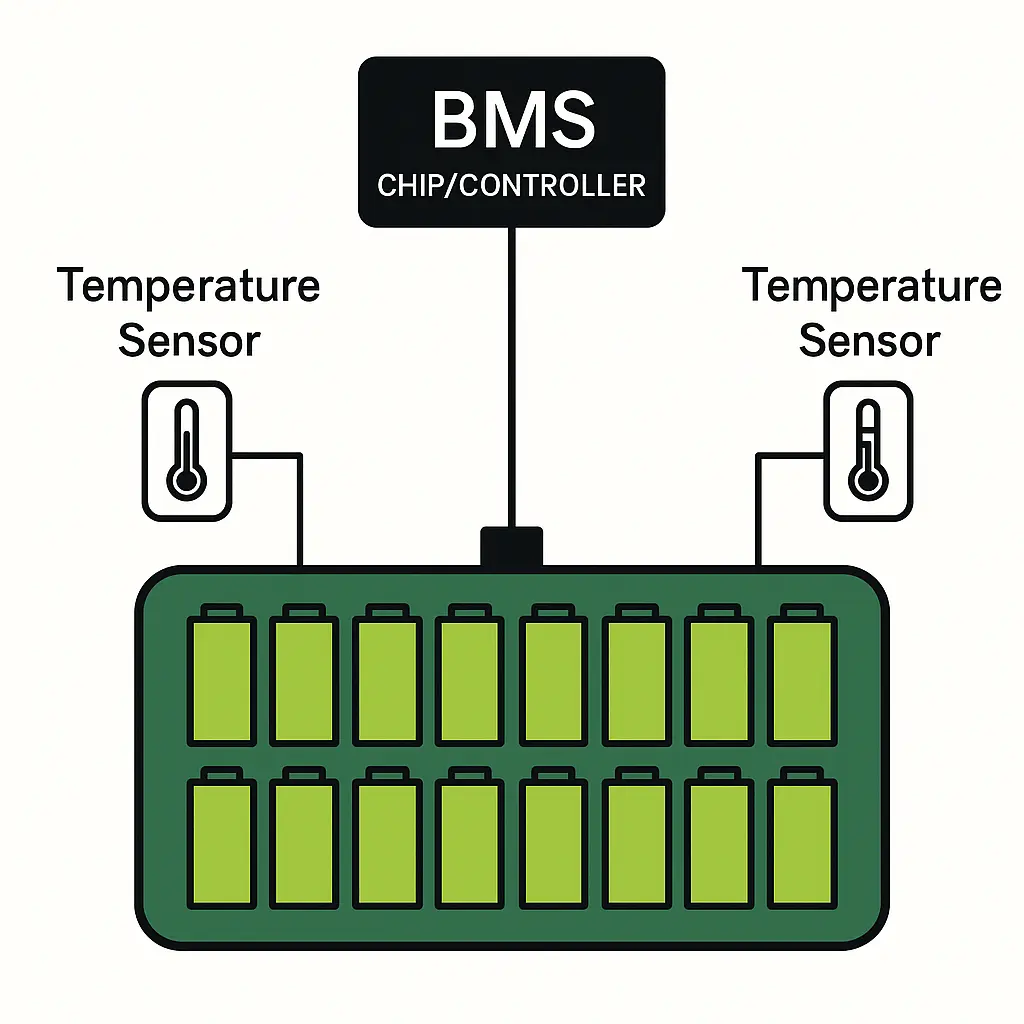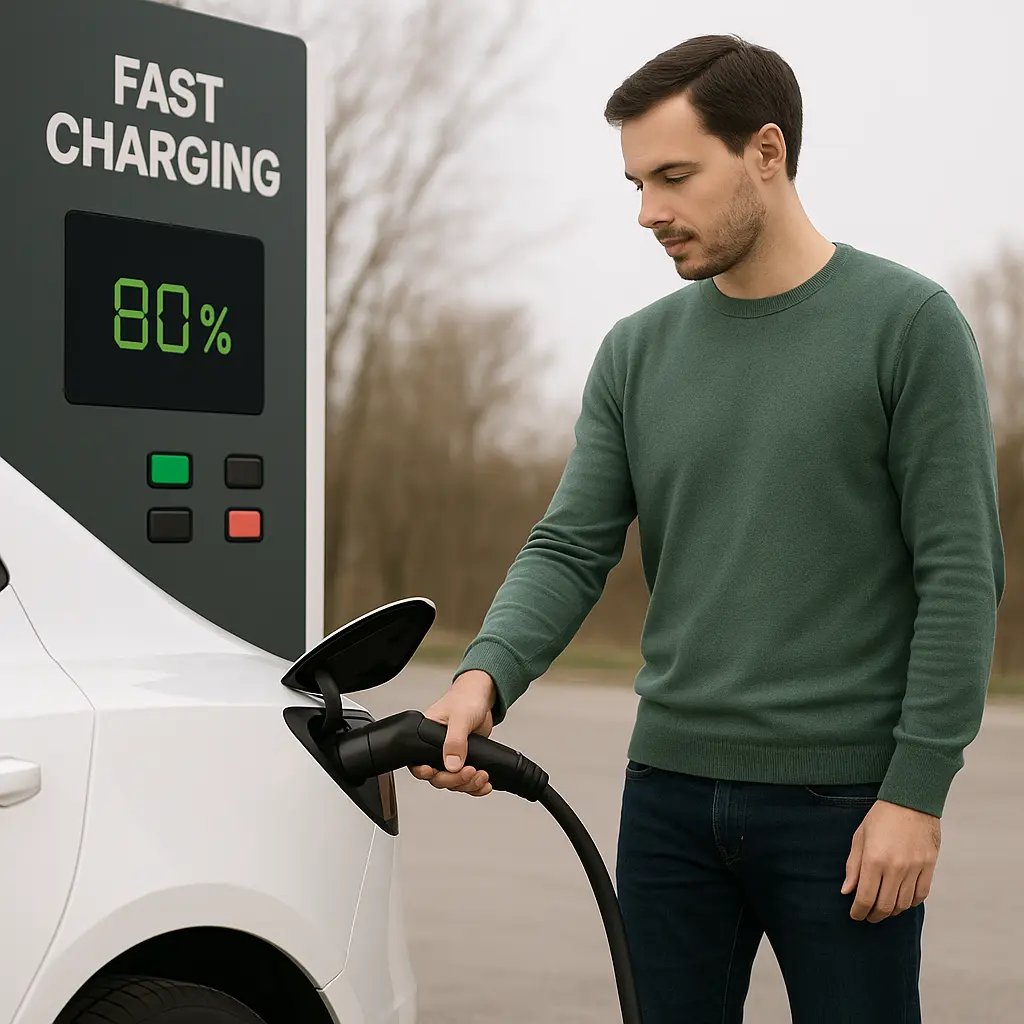If you’ve ever fast-charged an electric vehicle (EV), you may have noticed that charging speeds are rapid at first but slow down significantly after hitting around 80% battery capacity. This isn’t a flaw or a problem—it’s actually by design. EVs slow charging after 80% to protect battery health, improve safety, and ensure long-term performance.
Understanding the EV Charging Curve

EV charging follows a pattern known as the tapering curve. In the early stages, the battery accepts power quickly. However, as it nears full charge, the rate naturally tapers off. This happens because lithium-ion batteries are most efficient when they are partially charged, and the stress on battery cells increases as they approach 100%.
A typical DC fast charging session includes:
0% to 80%: Rapid charging using high current
80% to 100%: Slower charging as current decreases and voltage is held constant
Battery Management Systems and Charging Control

Every EV has a Battery Management System (BMS) that monitors and controls the charging process. The BMS ensures that the battery charges safely by:
Regulating voltage and current
Monitoring cell temperatures
Preventing overcharging
After 80%, the BMS deliberately reduces charging speed to reduce the risk of battery degradation and overheating.
The Role of Heat and Thermal Management
Fast charging generates heat. To prevent overheating and potential damage, the EV’s thermal management system slows charging as temperatures rise. This is especially important in the final 20% of charging, when battery cells are more vulnerable to heat stress.
Constant Current vs. Constant Voltage Charging Phases
EV batteries are charged in two key phases:
Constant Current (CC): From 0% to around 80%, the charger supplies a steady high current.
Constant Voltage (CV): From 80% to 100%, the voltage is held constant, and current gradually decreases.
The CV phase is inherently slower and is essential to safely top off the battery without overcharging.
Cell Balancing for Battery Health
Lithium-ion battery packs consist of many individual cells. As the battery charges, some cells may fill faster than others. In the final 20%, the BMS performs cell balancing to ensure all cells reach a consistent voltage. This process requires slowing down the charging current for accuracy and safety.
Why Most EV Drivers Charge Only to 80%
Charging from 80% to 100% can take nearly as long as charging from 20% to 80%. That’s why most EV drivers stop at 80% during fast charging, especially on long trips where efficiency and time matter most.
Benefits of charging to 80%:
Saves time at charging stations
Reduces battery wear and tear
Maintains optimal charging efficiency
Unless you need the full range, charging to 80% is usually the smart choice.
Conclusion
Slowing down charging after 80% is a built-in feature that protects your EV battery and maximizes its lifespan. Understanding this charging behavior can help you plan more efficient trips and make informed charging decisions.







